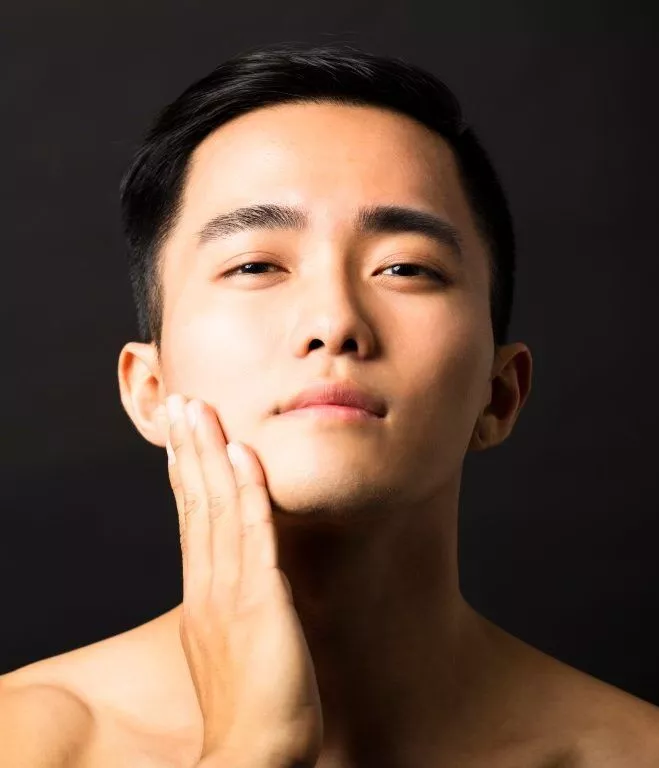ASIAN RHINOPLASTY
Conveniently located to serve Beverly Hills, Hollywood, Los Angeles, NYC, and Miami.
WHAT IS ASIAN RHINOPLASTY??
Asian rhinoplasty is nose job surgery that is tailored to the needs of Asian patients who want to reshape the nose while maintaining a culturally-consistent look. This procedure should only be performed by qualified surgeons who specialize in ethnic rhinoplasty and are knowledgeable about the anatomical and aesthetic considerations that must be addressed.
Typically, Western-trained plastic surgeons are only taught techniques that apply to the Caucasian nasal structure and Western standards of beauty. As a result, they are under-educated and inexperienced in Asian rhinoplasty, which often leads to botched and ethnically incongruent outcomes.
We have the experience and advanced surgical skills that allow us to meet the needs of Asian rhinoplasty patients. Some of the most prevalent cosmetic goals among Asian rhinoplasty patients include:
- A larger, more prominent nose
- A narrower and/or higher bridge
- A more projected nasal tip
- A narrower nasal tip
- Nostril reduction

RIGHT FOR YOU?
WHO IS A CANDIDATE FOR ASIAN RHINOPLASTY?
HOWIS ASIAN RHINOPLASTY PERFORMED?
Your Asian rhinoplasty will be performed in a state-of-the-art surgical facility. Rhinoplasty is considered an outpatient procedure, which means you will be able to go home within hours of the surgery.
To ensure a comfortable experience for the patient, anesthesia is administered at the start of the procedure. After the anesthesia has taken effect, an external incision will be made at the base of the soft tissue that separates the nostrils.
The nasal tissue will be lifted to expose the inner nasal structure. The bone and cartilage can be modified to achieve the patient’s desired enhancements. Sutures will be used to secure the new nose shape and to close the external incision.
Traditional Western rhinoplasty techniques are generally not ideal for the Asian nose due to anatomical differences. We have developed refined methods for Asian rhinoplasty and carefully consider cultural characteristics, including:
- Thicker skin – For patients with thinner skin, such as Caucasian women, even slight modifications to the nasal cartilage or bone will produce significant changes in the appearance of the nose. Thicker skin requires a different approach to altering the nasal structure, as well as redraping the skin after changes have been made.
- Thinner cartilage – Cartilage reduction is an effective method of narrowing the nasal tip in Western patients. However, this technique can have the opposite result among those with thinner cartilage, so cartilage grafting is used to refine the shape and projection of the nasal tip for Asian patients.
Our approach to Asian rhinoplasty is guided by our knowledge of the proportions and features that define a balanced, aesthetic facial appearance for patients seeking this treatment. We also engage in in-depth conversations with patients to ensure that we can accurately conceptualize their desired look.
Digital-imaging technology may be used to further refine a patient’s cosmetic goals. Reviewing before-and-after pictures of previous rhinoplasty patients can play an important role in this process as well.
Comprehensive aftercare instructions will be provided for every stage of your recovery. Adhering to these recommendations is essential for optimal healing and to avoid compromising your results.
The nose will be bandaged after your procedure. This dressing will help protect the treatment area, and it will be removed after about a week during a follow-up appointment. External stitches can also be removed at that time.
Patients should plan for at least a week of downtime to rest after surgery. Discomfort is normal in the first week or two of rhinoplasty recovery. Post-op swelling and bruising in the treatment area should begin to diminish after one or two weeks. Over-the-counter products or prescription medication may be recommended to help you stay comfortable until these symptoms subside.

